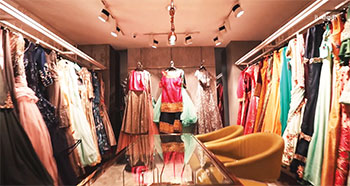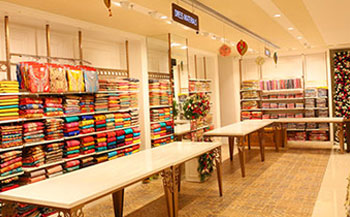India’s family stores : Predictive but Successful
By Satarupa Chakraborty | April 15, 2019
Far from the trends of new age retailing, India’s family stores are making experiences specific to their regions and customers.
 India’s family stores : Predictive but Successful
India’s family stores : Predictive but Successful
Barney’s is reportedly shrinking its iconic NY Flagship store on Madison Avenue. Downsizing and re-sizing store strategies are continuing to be better selling strategies for global bigbox retailers like Macy’s, CK, Target and many more.
In India however, large format family store concepts are not only being retained, but they are also driving business benefits. Satarupa Chakraborty, Associate Editor, VM&RD and Retail4growth attempts  to decode some of these success stories .
to decode some of these success stories .
Sticking to respective regions
What’s in common between Sohum Shoppe from Guwahati, South India Shopping Mall from Hyderabad, Kapsons from Punjab and Jade Blue from Ahmedabad? They all remained in the region that they started from and more notably, at least one or two generations back.
All corporate retailers today are literally struggling with region-specific inventory management and winning customer loyalty. A great deal of technology like AI etc is deployed to decipher the fact that what works for Delhi doesn’t necessarily work for Bangalore.
If you are wondering, why South India Shopping Mall’s Group Company, with over Rs 1600 crore turnover is not turning to set up a store in Delhi, you know why - because they are masters in understanding the customer base in that region and they are content and confident about that.
Loyalty to high street properties
Popular mall property cost on an aggregate is 30-40% higher than high street properties. Of course there’s exception and we are not talking about Khan Market in Delhi or an Indiranagar in Bangalore. These family stores are often tucked in high street locations and the origin stores are always celebrated the most. Often times, the consecutive outlets don’t move much away from the vicinity of the origin stores. The advantage? Not losing the regular footfall, while the upgraded retail experience keeps the customers happy when they are comparing the experience with their counterpart retailers. Also, because store footfall is the only business resource for them (as they don’t trust omni-channel and e-commerce much), dense inventory symbolizes better business for them. When they rent out an entire building, their opex cost per square feet comes down and rent is lighter.
Conforming to no fancy fads
Often times, the look-and-feel of these stores remains the same for years. If you go for saree shopping in Nalli, it’s still rooted in age-old saree retailing concepts. For example, hanging display might be the new trend in new-age saree retailing, but a Nalli would continue to stack them in horizontal display systems. Also, while the external store design is revamped and VM embellishments are added, the stores generally follow some core values that have remained with them for ages. Of course the vertical growth happens and merchandises are slowly moving towards the interest direction of the millennials. But the core concept of family store remains, which means carrying on the legacy of tradition and values that generations before have held on to.
The folded hands, the water glass, the works.
I was recently talking to Yatin Jain, owner of Odhni. Odhni is that kind of flashy neighbourhood saree store, where Punjabi ladies can do their kitty party over saree shopping. Now, we all know that the share-of-watch mostly converts into share-of-wallet. While corporate retailers are investing big on making their customers stay and betting on endless gimmicks and experiences. {read my article here http://www.retail4growth.com/viewpoints/experience-add-to-the-cart-please-548}, these retailers are crafting experiences that work perfectly for their customers. If a Swarovski-studded chair works for a typical family store in west Delhi, South Indian film or classical music may up the ante for a store in Chennai – the point is that these retailers know their patrons well.






Comments